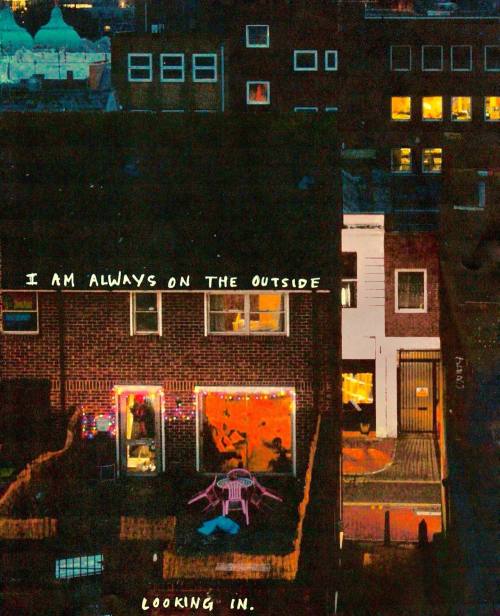MERRY CHRISTMAS EVERYONE!
Yes, I know that it’s over two weeks to go until That Special Day, but tomorrow I turn off the internet for a few weeks and as a result this is the FINAL WEB CURIOS OF 2023!
I am going to take a brief moment for some tediously-self-indulgent navelgazing, if that’s ok, but presuming you have less than no interest in that sort of crap you may just want to scroll down a bit and get stuck into the good stuff.
RIGHT. Brief, tedious, self-indulgent navelgazing interlude.
First off, a sincere and genuine (insofar I am capable of either) thankyou to all of you for reading this fcuking thing. I know that Web Curios is too long, too full of stuff, too verbose and too unfocused, and that the authorial style I insist on deploying might politely be described as ‘not everyone’s cup of tea’, and that it’s probably something of a struggle to digest at times, and so I just wanted to say how grateful I am to those of you who fight with the length and the breadth and the frankly substandard prose to find the nuggets (nuggets of what exactly is, of course, debatable) buried therein.
Second, thanks SO MUCH to every single one of you who has written to me or sent me links or told me about your projects over the past 12 months – it is always a pleasure to know that a few dozen people ACTUALLY READ this, and some of you aren’t even related to me.
Thirdly, a brief apology for the fact that I appreciate I have been perhaps even less sunny than usual this year – what can I say, I have had a time. I will do my best to be marginally more cheerful in 2023.
Fourthly, I hope all of you have a lovely festive period, wherever you are and whatever you plan to do with yourselves, and that everything is as ok as it can be given, well, everything.
So after 41 Curios and, conservatively, somewhere in the region of 4,000 links, I am DONE with this year. Fcuk you, 2022, you were a fcuking cnut and I am glad to see the back of you.
I am still Matt, this is still Web Curios, and I hope that neither you nor I die in the next month or so so that we can all meet back here in January for another year of staring, boggle-eyed, into the barrel of the futuregun.

THE SECTION WHICH APOLOGISES FOR THE PROLIFERATION OF AI LINKS AND PROMISES TO DIAL IT DOWN IN 2023, PT.1:
- How To Turn ChatGPT Evil: Apologies in advance for the extent to which this first section is dominated by Ai text stuff, but, well, it’s VERY EXCITING (by which, in the main, I mean that I have spent most of the past week feverishly Googling ‘unexpected career pivots for middle-aged men’). We start with this fun little series of instructions, contained in a Twitter thread, on how to make ChatGPT…loosen up a bit. Ordinarily when you ask the software to explain something nefarious to you – say, I don’t know, how to use quicklime to dispose of a human corpse, that sort of thing – the software will demur and pretend it simply couldn’t possibly do something so awful; if, however, you trick it into only acting like it’s an evil AI then you can manipulate into giving you all sorts of helpful assistance when it comes to getting away with literal murder (other crimes are available; Web Curios does not endorse or encourage murder, even at this most trying time of the year). This is included less because I expect you all to start plotting criminal careers abetted by a machine and more as another fun way of playing with the software – and, I suppose, as a reminder that the machines are still pretty dumb. Does that make you feel better? I am not sure it makes me feel better.
- Awesome ChatGPT Prompts: I can’t vouch for their ‘awesomeness’, but these are some interesting examples of ways you might use ChatGPT for fun and profit. There are prompt examples here to turn the machine into a proofreader for English, a screenwriter, a…er…relationship counsellor(!), a text adventure game, an accountant…obviously (and I don’t feel I need to tell *you* this, but just in case) you shouldn’t at any point take advice on anything important from a machine which cannot in any meaningful way be claimed to ‘understand’ what it is saying to you, but it’s fascinating to see how many different use cases people have put this stuff to within literally a week. You can find another bunch of (less well-curated) prompt ideas here – there’s one in this second list which involves asking the AI to create a workout for you, which feels like EXACTLY the sort of request that’s going to end up in tears and Deep Heat and an unpleasantly-strained glute, so you all please take care with this stuff.
- How To Use ChatGPT To Code A Basic Website: To be clear – I have not tried this, and I am slightly sceptical that it will work straight out of the box…BUT, that said, the prompt here given will in theory get the chatbot to take you through all the steps needed to code a simple website; fine, we’re not quite at the stage where it will do all the really tedious stuff (why is registering domains and doing hosting b0llocks so painful? WHY?) for you, but this feels quite a lot like magic, particularly when you consider that this is very much the first wave of this sort of thing.
- Moonbeam: Of course, what’s most interesting about the sudden swell of renewed interest in Large Language Model text generation is the swathe of products and services that are going to be built on top of tools like ChatGPT3. Tools like Moonbeam, which is basically a nice and user-friendly front-end to help you automate a bunch of tedious business-related writing tasks to churn out content that noone cares about and no actual humans really want to read. This is a bit like Jasper, another writing assistant which I featured on here a while back, but which claims itself to be significantly more powerful and is very much aimed at agencies and the like – there’s a real (short-term, fine, but still) opportunity here in creating templates and tools for content miners to use, and I would imagine that somewhere in Big Agency Holding Company Land the ghost of Marcel is stirring (shout out to the 17 people who get this joke).
- InWorld: One of the really interesting things this week has been watching people using the ChatGPT interface to spin up incredibly good chatbots based on pop culture characters, and even manage to create AI Dungeon-style text adventure games within the software. InWorld is ‘character chatbots’, but VERY SHINY and, honestly, quite remarkably impressive. The link here takes you to the ‘Arcade’ Page of their website, where you can play around with various fan-created chatbots embodying a selection of characters (tropes or people from popular fictional properties, in the main), but the really interesting bit comes when you try and create your own and you get into the wealth of personality traits and backstory and behaviours that you can define. More than anything else this week, this gave me a real frisson of excitement about the potential for storytelling and creation and worldbuilding that this sort of code affords – the idea of anyone being able to spin up a wealth of individual characters with recognisable, individual traits that will determine their behaviours, and then letting them interact with each other, and with players, within a defined ludic or narrative setting is…amazing, honestly. Do have a play with this – it’s really very interesting indeed, and hints at an awful lot of imminent potential.
- The AI Sages: Or “It took about 12 hours from the launch of the new GPT3.5 code for someone to ‘write’ a ‘book’ using the tech and make it available for sale on Amazon for a few bucks” – fair play to the people who turned this around so quickly. This is not, to be clear, a book that I could imagine anyone would ever find worth reading – unless you really, really want to own a selection of motivational quotations made up by an AI and attributed to a bunch of renowned thinkers from history, and then illustrated by another AI (you don’t, do you? Please say you don’t) – but it’s certainly a curio. Bear in mind that from hereon in there will be a non-trivial chance that any self-published book on Amazon (other, less evil online book marketplaces are available) will have been churned out by AI based on prompts like “Write me a twisty, turny domestic psychological thriller with a series of unreliable protagonists, Amazon bestseller, page-turner”. In fact, fcuk this Curios lark, I am using my Christmas break to train a machine on Lee Child novels and make myself a fortune.
- Ask Alfred: One of the frothier takes seen in the wild this week has been ‘this ChatGPT thing is basically the end of Google’, which struck me as rather underestimating the importance of all the work that Google has spent a couple of decades doing on establishing information and trustworthiness rankings across the giant network of the web (yes, ok, fine, it’s also rather fcuked a lot of all that work by devaluing its core product with adverts to th point of near unusability, but still) – just asking an AI for information and getting an answer presented as the single truth, with no obvious explanation or indication or rationale as to why that particular answer is the right one, does not strike me as an immediate improvement on the current system – hadn’t we all agreed that unknowable black box systems are not necessarily things we want to be determining human decision making? Still, it’s also undeniably true that the discursive Q&A style information delivery system – FINALLY, THE JEEVES DREAM HAS BEEN REALISED? Is…is it time for Ask Jeeves to finally be resurrected? – appeals to users and has certain benefits; if you’re curious as to how GPT would work as a search engine, you can install this Chrome extension which will add a ChatGPT result to your Google searches for comparative purposes. Interesting, not least as it shows up all the areas in which Google is simply a bit broken as a result of aggressive SEO-gaming.
- CreAItives: Yes, I know, I am upset by this website’s name too. Still, it is VERY USEFUL and if you have any interest in keeping up with developments in the AI image and copy and video space you should probably bookmark it – this is basically a massive, regularly-updated database of AI tools and toys to play with, from a bunch of different tools to places to find other artists and enthusiasts online, to useful texts on best practice…honestly, this is really helpful and packed full of decent resources.
- Originality AI: Of course, for everyone rubbing their hands in glee and thinking “Christ, I can get GPT to churn out literally EVERYTHING I need to write and therefore spend a significant proportion of the next few years working no more than two hours a week! The leisure age is truly arrived! PEEL MY GRAPES!” there will be a possibly equal number thinking “There is no way I am going to let these lazy fcuks outsource all their work to machines while I have to carry on paying them” – which is where services such as OriginalityAI come in. This outfit claims to be able to identify AI-generated copy with 94% accuracy (it’s benchmarked against ChatGPT), and it’s aimed at people working in the content shovelware market rather than in academia – the idea being that sometimes you really want to be 100% certain that the blogpost about the importance of LISTENING before you ENGAGE on social media (for example) hasn’t been spaffed out in three seconds by an AI. I am very much looking forward to the first spate of panicked articles in the serious press about “THIEVING STAFF”, condemning the fact that white collar drones the world over will soon be doing everything in their power to make the machines work for them (in the brief window before the machines take over and everything goes sideways). Because, honestly, wouldn’t you outsource most of your pointless job to a machine, given the chance?
- Tome: Speaking of ‘AI as a labour saving device in the white collar workplace’, do you think, perhaps, that there are certain decisions that you might not immediately think ‘yes, this makes sense to outsource to a largely-unproven, experimental and most-definitely-not-that-intelligent-AI’? Yes, me too – but this hasn’t stopped the appearance of Tome, a service which promises to offer VCs and Angel investors a quick and easy way of looking over the contracts presented to them by the businesses they are looking to invest in. I mean, you *could* take the time to read through all the documentation relating to the hot new startup you think will change the world and make you millions – you COULD – but, well, there are Patagonia vests to buy and nootropics to take, and gym sessions and microdosing and long sessions talking about the importance of EA as a truly PARADIGM-SHIFTING MOVEMENT, and, honestly, who’s got the time? NO FCUKER, etc. So let Tome do the hard work of reading over all the legal documentation and summarising it for you – what, after all, is the worst that could happen? Now to be clear, obviously summarising contracts is something that can in theory be automated due to the reasonably standard language and structure of the documents, but I wonder with stuff like this what unknown unknowns will be lost through the process – I remember reading something a few years back suggesting that one of the odd potential side-effects of AI’s introduction to the law (for example) was that a whole swathe of junior legal staff would be undertrained in aspects of legislation because they simply wouldn’t have to spend the same amount of time reading through old cases, etc, because they could just get machines to analyse them instead, and this feels like a comparable sort of field.
- MyPitchDeck: Using AI to create pitch presentations for startups to use with potential investors! I am including this not because I think it looks good (it doesn’t, particularly) but because it’s exactly the sort of business that we are going to see EVERYWHERE in 2023 – AI-based assistance for specific sectoral tasks will be the new dropshipping, mark my words. The margin on this stuff is insane – these people are charging $33 a pop to create a 10-slide presentation through an entirely-automated process, which strikes me as a pretty good wedge of profit. What particular niche can YOU serve with an ostensibly-simple but in-reality-practically-useless AI-based solution?
- Hello: This is interesting – Hello is a new search engine currently in beta which markets itself as being ‘for developers’ – what this effectively means is that you can tell it to return results in code, which, if you’re someone who spends a lot of time wrangling Python or similar horrible programming language, might well be useful. “Hello is a search engine that simply tells users what the answer is. Optimized for developers and technical questions, Hello instantly answers questions with simple explanations and relevant code snippets from the web. Hello is powered by large, proprietary AI language models. It’s smart enough to generate answers based on information from multiple sources.” If you code, this is probably worth a look.
- Aragon: Stable Diffusion-based online image generators are practically old hat by now (how quickly we grow so jaded!), but this is, again, an interesting example from the point of view of ease of use and user interface – Aragon offers a bunch of readymade template options for image creation, so you can use it to create pictures of yourself (for example) in specific locations, or looking SUPER BUSINESS for LinkedIn, or, weirdly, looking ‘All American’, and they have additional templates in development to allow for the easy insertion of logos and branded products into AI-generated images. Again, the point here is less about what you can do with this stuff and more the idea that there is a market and margin in the idea of making it as frictionless for the muggles to use as possible.
- Rick and Mortify: Do people still watch or care about Rick & Morty, or is that just too 2015 for anyone in modernity to bother with? If the answer is ‘yes’, then you might enjoy playing with this AI toy which spits out new, computer-imagined storyboards and accompanying images based on a few simple user prompts – if the answer is ‘no’ then, well, I don’t know what to tell you. Shall we move on? Let’s move on.
- Prompt Battle: I actually saw footage from the first one of these floating around a few months ago, but now there is a website and everything and as such we can call it a TREND and I can link to it with impunity. Did any of you ever go to those Secret Wars nights they ran in London in the 00s, where a bunch of graffiti artists would effectively do art battles over the course of an evening, taking half a wall each, while a bunch of DJs played and a load of slightly-awkward looking people stood around biting their lips and bopping their heads? No? Well I did, and this reminds me of that slightly – Prompt Battle is an event idea which started in Dresden in October, and which involves a single simple premise whereby a bunch of people compete to…oh, look, here: “Prompt Battle is a live event where people compete against each other using text-to-image software. Show off your prompt skills and maybe the audience will choose you as the winner who elicited the most surprising, disturbing or beautiful images from the latent spaces of DALL·E 2, Stable Diffusion, Midjourney, Craiyon, etc.” Obviously what we are talking about here is, effectively, a bunch of people sitting at keyboards, typing, and occasionally throwing pictures up on a screen for people to clap or jeer at, but I like the fact that someone is bothering to do this, and there’s something pleasing about taking something which is largely a solo pursuit that takes place sitting and staring at a screen (that is, looking at AI imagined artworks) and turns it into something communal and community-focused (whilst, yes, fine, still involving staring at screens). The next prompt battle is taking place in February in Berlin, should you be minded to go, but this feels like the sort of thing that they wouldn’t mind you creating spin-off events wherever you live. YEARS ago I went to a pub quiz in London where the gimmick was that the questions were impossible to answer without the aid of a smartphone, which felt like a nice mixture of the (then) modern and the traditional, and this has a pleasingly-similar vibe (to my mind at least).
- AI Pickup Lines: Don’t act like you’re surprised. Look, here’s a feature idea should any journalists be reading this – The Rise Of The Digital Cyrano: What Does The Rise Of Text AI Mean For Dating? Come on, it’s a GREAT pitch! Anyway, AI pickup lines is the first (that I have seen, at least) hastily-cobbled-together platform to harness the POWER OF AI in order to help you in your attempts to persuade someone to let you touch their mucous membranes – give it a keyword and it will generate a pickup line for you in seconds. Obviously these are all terrible, but, equally, they are not THAT terrible – I just gave it ‘Cthulhu’ in an attempt to confuse it, and it came back with “I’m drawn to you like a cult to Cthulhu!” which, while pretty unlikely to make anyone swoon, is certainly better than I had expected. Seriously, though, I wonder whether one of the big apps will shortly announce a feature that claims to detect AI generated copy? Because I’d be amazed if there aren’t an awful lot of men currently asking ChatGPT to “generate a selection of witty conversational gambits to use in a dating scenario with an attractive woman who I would like to convince to sleep with me, funny, self-deprecating, emotional IQ, vulnerable, respectful.” (seriously, “I Let An AI Use Me Like A Flesh Puppet And I Got Laid So Much” is another decent pitch, should you be in the market for it. God I am WASTED in newslettering, I tell you).

THE SECTION WHICH APOLOGISES FOR THE PROLIFERATION OF AI LINKS AND PROMISES TO DIAL IT DOWN IN 2023, PT.2:
- 2022 In Trending Topics: It’s often said that Twitter’s trending topics are one of the most unhinged manifestations of the way in which social media and the web and the near-infinity of digital touchpoints for news have created a situation of context collapse, and that they offer the best example of the dizzying gatling-gun-to-the-face, whiplash nature of the modern experience (or it is by me). This is the 2022 Twitter Trends archive, compiled by Brian Feldman who over the course of the past year has spent time screenshotting Twitter’s trending topics in the US. As Brian puts it, “This website is an archive of the 457 different trending topics I logged from Twitter throughout 2022. I’ve presented them both as a calendar that you can poke through, and as a timeline that you can read from start to finish if you have the patience and the stomach…Please understand, and embrace, the specificity. This is not everyone’s Twitter 2022, it’s mine. Maybe some of it was yours, too.” This is funny, incomprehensible, maddening, silly and, maybe most of all, eventually-deadening – perhaps the ur-evocation of what still remains the truest thing ever written by a machine, ever.
- The Reddit Comment Stream: In a similar vein to the previous link, this is a live feed of comments being posted on Reddit – you can filter it do eliminate any NSFW material at source, should you be worried about unsolicited bongo, but it’s seemingly text-only in any case so you should be fine. I think I have previously waxed lyrical about how magical and strange and sad and beautiful I find this sort of thing – a window into the collective consciousness in realtime is a marvellous and terrifying gift, after all – and this is no exception. In the couple of minutes I’ve had the link open this morning I have seen posts about coding, about US gold reserves, about the cold weather in the UK, and, er, a lot of very thirsty people offering handjobs; ALL OF HUMAN LIFE IS HERE! Or at least the slice of human life that hangs out on Reddit, which you may or may not feel is representative of the species as a whole.
- Omeife: The dream of creating a useful, functional humanoid robot seems to have taken something of a back seat of late, Elon’s empty promises aside, so it was pleasing to find this link and learn about Omeife, a project being undertaken in Nigeria which is looking to build “a 6-foot-tall multilingual human-like robot. From an idea that was conceptualised in 2020 to a back-and-forth construction—slow wins and quick-succession learning—that stretched across two years, Omeife, built as a female Igbo character that understands and speaks eight different languages, is now a product ready to meet the world. Powered by sophisticated artificial intelligence algorithms developed in-house by the company’s team of scientists, Omeife has a deep understanding of African culture and behavioural patterns. Omeife has a real time understanding of its environment including active listening and the ability to focus on a specific conversation thread as it is happening. She is not just multilingual, it has the ability to switch languages and interact with specific gestures—hand illustrations, smile and other bodily gestures—that match the tone of the conversation. Omeife currently speaks English, French, Arabic, Kiswahili, Pidgin, Wazobia, Afrikaans, and of course, Igbo.” Now, I can’t help but be a bit uncertain about some of the claims here, but let’s take them at face value for a second – what’s perhaps most interesting about this, beyond the whole ‘a humanoid robot’ thing, is that it’s being built by an African team, in Africa, and as a result will have certain African sensibilities – I particularly liked the fact that Omeife won’t use particular phrases or expressions in conversation as they aren’t ‘polite’ in African cultures. As with all these things, the current iteration of the robot is a long way from looking like the scifi androids of popular imagining but if you’re interested in robotics, or indeed just in how tech projects like this look when they’re undertaken by people who aren’t from the global north, this is worth keeping an eye on.
- Tone Transfer: Ooh, this is FUN. A nice little Google toy to show off the company’s work in AI-directed audio style transfer – which basically means ‘software that can take the sound of a certain instrument and copy the tune and pitch but make it sound like it was in fact played by another instrument altogether’. Which, again, is a p1ss-poor description, for which sincere apologies – look, just click the link and have a play. There are a bunch of prerecorded instrumental sounds you can play with, but perhaps most interestingly you can plug in your own instruments and see what you can do with your own musical noodlings. Want to play your original SMASH HIT (and yet sadly unrecognised by the wider world, chiz chiz) guitar composition and see what it would sound like for the bassoon? Well now you can! On the one hand, super-fun and you can already see the indistinct edges of what the next few years of musical creativity might look like and how they might work; on the other hand, this doesn’t feel like GREAT news for session musicians, long-term.
- Abyme: Look, I have to admit that I don’t really understand what this is about – I *think* that Abyme is a publishing house-slash-typographic studio, but I honestly can’t really make head nor tail of this or what it means: “ABYME is an independent publisher of artist’s editions and multiples founded by John Morgan and Adrien Vasquez in 2017. Abyme’s interest often but not exclusively begins with text or typography; consequently at the heart of Abyme is a digital type foundry. Many of the editions and typefaces began life as a ‘work’ inside another ‘work’ produced by John Morgan studio or through the extended culture and relationships of the practice. Abyme offers a platform to implement, publish and distribute these works and develop editions with new and existing collaborators.” Still, I LOVE their website, mainly because it’s a borderline-incomprehensible collage of cartoons and illustrations and photos and literary extracts and quotations, and, inexplicably, gifs of eels.
- Lobby: Are you thinking about new year’s resolutions and how you are going to make your life DIFFERENT AND BETTER? Perhaps one of your commitments will be to spend more time speaking with your friends, in which case perhaps you should suggest that you and your mates all install Lobby which will basically force you into speaking to a friend each day until you uninstall the app out of a sense of combined boredom and frustration. The gimmick here is very much a post-BeReal one (although it seems this has actually been around a while) – every day the app will force you to have a one-minute videochat with one of your friends, at what seems to be a random time. Doing something important? DON’T CARE TALK TO TRACY. In the middle of an important conversation in real life? SHUTUP AND HAVE A ZOOM CALL WITH FINLAY. You can see how this could get annoying, couldn’t you? Still, if you want to have a succession of increasingly terse and resentful minute-long conversations with people who, if you keep this up, won’t be your friends much longer, then you may want to give this a try.
- The California Roadkill Observation System: I have no idea whether any of you live in California – do any of you live in California? – but if you do then I imagine you have for YEARS been bemoaning the lack of any decent record of where exactly the State’s multitudinous wildlife population is most likely to get mown down by a Cadillac. BEMOAN NO LONGER! “This web system can be used to record observations from roadkill-reporters out in the field who come across identifiable road-killed wildlife. Observation details include type of animal and/or species found, where the road-kill was located, when it was found, pictures of the road-kill, and any additional details about road or traffic conditions. The system then displays a summary of this information for different animal groups across the state.” There are PICTURES (well, some pictures)! This is almost certainly a really useful resource for a whole bunch of different agencies and organisations, but I can’t quite get over the disclaimer on the homepage which points out that they are more than happy for submissions to be anonymous and which led me to think that maybe there’s some sort of roadkill serial killer stalking the highways of California mowing down Coyotes and uploading the snuff photos here in some sort of macabre, death-related version of real-life (death) Pokemon.
- TwoTone: I would imagine if you work in any sort of vaguely-digital-ish job that you have spent much of the past decade having conversations about ‘data’ – how important it is, how oil-like it is, how vital it is that your data be BIG and SMART and JOINED-UP, and CLEAN. I would also imagine that in your more honest moments you probably aren’t wholly convinced as to the utility of collecting all this data, or the value of analysing it, or indeed of the ability of any of your colleagues to make head nor fcuking tail of whatever it is that said data may or may not be trying to tell you – if that’s the case, why not make it your 2023 goal (aim low!) to make your data MUSICAL? TwoTone is a service that lets you plug in any dataset you like and make audio out of it – it’s important to bear in mind that the outputs will likely sound awful, but just think how much fun you could have in Q12023 if you manage to persuade your CMO that what the business REALLY needs is an audio sting that is intimately tied to the very fundamentals of the business and should be derived from, I don’t know, the last three years of your diversity paygap reporting turned into a bloopy audiotrack. Go on, aim for the stars.
- All I Want For Christmas Is Bootie Mashup: Fine, this should probably be one of the music links, but it requires a download and I have a particular weird taxonomy going on here that therefore requires that it go in here instead. Have you ever thought ‘you know what I would like to listen to more than anything else in the whole world in the month of December? A 40+track compilation of some of the best (oh, ok, least-bad) mashups featuring Mariah Carey’s “All I Want For Christmas!”’ No, of course you haven’t, and yet here we are. This is, personally speaking, my very own Guantanamo soundtrack, but I appreciate that there are others of you out there for whom this may be less of an aural torture.
- Associated Press Photographs of the Year 2022: You know the drill by now. I did find the opening line of the copy accompanying the photos here rather arresting – “Taken together, they can convey the feeling of a world convulsing” – and it’s certainly true that there is a LOT in these pics, and a sense that (even if you’re someone who, like me, spends more time than is conceivably healthy with your face plugged into the world online events firehose) there is simply too much happening everywhere all the time to ever get anything resembling a coherent picture or sense of the whole. Which is, of course, true, and maybe it’s healthy to remember that every now and again and concede that so much is necessarily unknowable to us, and incomprehensible. Hm, does that make sense? Not sure, it’s too cold for me to think properly. Anyway, as ever with the AP’s annual best-of there are some astonishing images in here, and many that are as heartbreaking as they are beautiful (there’s a not-inconsiderable amount of death and destruction, as per). My personal favourite is the one of the protestor in Buenos Aires, but please pick your own (YOU CAN’T HAVE MINE FFS!).
- The Northern Lights Photographer of the Year: Experience the majesty of the aurora borealis from the warmth and comf- oh, no, hang on, it is not warm and comfortable, it is COLD and we may as well be in the frozen wastes of the North. Still, if you want to see 25 photographs of pretty lights in the sky over snowy vistas then this will sort you right out.
- The Natural Landscape Photography Awards 2022: These are WONDERFUL – so many glorious subjects and beautifully-composed shots, with the best ones (to my mind) achieving that trick of making landscape look both recognisable and entirely abstract at the same time.
- Wyldcard: This is such a clever idea, and the potential applications are vast – Wyldcard is basically a prototype e-ink playing card system in search of a game mechanic. Its designer, a certain Jonah, writes: “Wyldcards are small plastic cards with e-ink screens (like a Kindle). When placed onto a plinth, the image on the card can be changed by a hidden computer. The cards also contain a memory chip, so they can store stats, moves, and keep changes and status effects from one game to the next. Plug your plinth into your friend’s and play against them.” Jonah is actively seeking collaborators to help him turn the prototypical idea into a playable game, so if you’re a game maker with ideas, or if you know anyone who fits the bill, do take a look at this – it feels very much like there’s *something* here.
- More AI-generated Imaginary Film Stills: You want a bunch of more images from imaginary films that don’t exist? GREAT! Another couple of a megadumps (here’s the second) of some of the recent new SD and Midjourney projects where people have basically plugged in ‘The Jungle Book, but directed by Akira Kurosawa’ (not exactly this, but you get the idea) into the machines to generate some truly wonderful stuff. Fine, ok, this is still a bit creativity-as-madlibs, but, well, that’s not that far away from how creativity works (sort of), and a lot of these are quite remarkable. Once again thanks to Rene Walter for compiling these.
- Rotaboxes: You may not think a game in which you’re asked each day to compose a photography by rotating individual square elements of it one-by-one until it’s perfect again would be fun, but I have played this every morning this week and I feel it has basically ushered me over the threshold into PROPER middle-aged, and I’ll shortly be investing in a year-long subscription to one of those puzzle magazines so beloved of Nanas on long coach journeys.
- Murdle: Speaking of Nanas and their puzzle books, do you like logic puzzles? You know, the ones with premises along the lines of “James likes Joanna; Joanna thinks Steven smells; Tony will sleep with John, but not Jane, on Wednesdays; Alan is the house gimp; using this information, please determine the exact configuration of the polycule on Thursdays”? You do, don’t you? In which case, GREAT! Murdle (I know that I had promised to feature no more Wordle-y puzzles in here, but this is only Wordle-y in the sense that its daily, promise) is a daily logic puzzle where you have to SOLVE THE MURDER – look, I warn you, this is HARD (or at least I found it so – I have only done one of them, but it took me a…frankly embarrassingly long time), but if you’re a particular type of person with a particular type of brain (specifically: one that is better and more efficient than mine), you may find this a pleasing addition to your morning procrastination routine.
- Costerly: Is a packet of fags in Liberia more or less expensive than a tracheotomy in Ecuador? Is it cheaper to buy a knockoff driving licence in Rome or to drink yourself to death in Bucharest? These are the sorts of TOUGH QUESTIONS that Costerly presents you with each day, in a game that doesn’t sound like it should be in any way fun or compelling but which somehow manages to be both.
- The Old Operating Theatre: Fancy playing a small piece of interactive fiction all about amputating someone’s leg? OF COURSE YOU DO! “Step into the role of a surgeon at St Thomas’ Hospital in the early 19th century, before the introduction of anaesthetics and antiseptic practices. Warning: This story is inspired by a real historical case and contains graphic descriptions of injury and surgery.” This was surprisingly fun and lightly educational, and I felt inordinately proud of the fact that I managed to get to the end without seemingly condemning my patient to a horrible, gangrenous demise.
- The Confounding Calendar: A new game a day until Christmas! Ludic gifts for all! “It’s that time of the year again. The days are shorter, the nights are longer, and the puzzles are puzzlier. We would like to once again present…The CONFOUNDING Calendar! A collection of tiny puzzles that functions like a free online advent calendar of games, with a little surprise for you to play each day in December. (Deducember, if you will.) Check back here each day of the month for new puzzle games!” I have played half-a-dozen of the nine available so far this year and they are a lot of fun – also, you can go back and play previous years’ entries too. Excellent end-of-year work avoidance, should you be firmly into the ‘shall we circle back on that in the New Year?’ phase of professionalism.
- Advent Incremental: The final miscellaneous link of 2022 is, appropriately enough, a Christmas-themed clicker game which will hopefully give you something to stare at, slack-jawed, until you can start the serious business of drinking and remembering why you only see your relatives a handful of times a year. Click! Wait! Watch the numbers go up and enjoy the inexplicably-satisfying itch-scratch of slow, incremental numerical progress! IT’S THE MOST WONDERFUL TIME OF THE YEAR!

By RubyEtc
THE CIRCUS OF TUMBLRS!
- Tumblr’s Year in Review: In general I tend not to find year-in-review posts by the social platforms hugely useful, but I’ll make an exception for Tumblr’s as it feels significantly more culturally-interesting than the others, perhaps because it tends to have less of an impact on the mainstream media and so tends to feel fresher and newer to me than the ones from Insta telling us all stuff we already basically know. If you want to know which fictional couples the ceaselessly-horny fandoms of Tumblr have spent most time ‘shipping this year, which fandoms have been most active, which KPop stars are biggest with users, what social issues most resonate with them, and a host of other information besides, this will be super-useful; honestly, if you’re doing anything with any sort of youth-focused bent then you really have no excuse not to at the very least skim this.
THE TROUGH OF (INSTA) FEEDS!
- A Rural Pen: I love this project, where ink and pigments are made from old firearms; “I take handguns and other firearms out of circulation, dissolve them in sulfuric acid and derive pigments from them, commonly known as Mars colors, including Mars Black, Mars Red and Mars Yellow. As these are hand crafted, the colors may vary. Join me in the transmutation of firearms into pigments.” SUCH a good idea.
LONG THINGS WHICH ARE LONG!
- Conversation Fear: Apologies, again, for the rather AI-ish bent to the first few articles here – again, though, this feels genuinely frothy and intellectually interesting and cusp-of-something-incredible-y (yes, fine, but you know what I mean), and it feels appropriate to share some writings that explore what the past year’s rise in accessible AI products across images and words might mean. First up we have this excellent and, if you’re feeling a bit scared of all this stuff, moderately-reassuring article by Rob Horning exploring what he sees as the inherent limitations of the current iteration of textual AIs and how these limitations both render them perfect for social media but, equally, perhaps less-threatening than we might initially have thought. I don’t necessarily agree with the slightly dismissive conclusion, but it’s hard to argue with Horning’s assertion here that: “Generative models produce images and fragments of text that are superficially novel and surprising but comprise a readily recognizable and predictable genre of intrinsically meaningless content. This material is not only perfectly suited to filling out templates with placeholder images and text; it is also well-suited to the master template of our time, the social media feed. It is calibrated to the amount of curiosity we bring to scrolling, to the desire to be distracted while procrastinating or waiting for something else to happen. Tech reporter Kashmir Hill tweeted that “About half of my feed now is text and art generated by AI. At what point do we just go 100% prompt?” The obvious answer — one that ChatGPT might even offer — is that feeds have always already been filled with algorithmically produced content, and generative models’ content just reflects a slightly different hybrid of human and machine than the one made up of humans and recommendation algorithms. The feed has always been a kind of chatbot responding to the prompts of our past interaction data. That is to say, feeds can be understood as AI-generated works, and vice versa: The output of models is always implicitly a kind of endless feed.”
- The Empty Brain: Another very useful corrective to some of the more hyperbolic commentary you might have seen about AI and the brain and parallels between the two over the course of the past twelve months, this piece is subtitled ‘the brain is not a computer’ and is a really helpful explanation of our current understanding of neurological function and the way in which we (again, currently) perceive memory and thought to work. I checked this with an actual (almost) qualified doctor of neuropsychology (thanks Shardcore) and he said it was ‘quite good’, which is endorsement enough for me; this article is specifically concerned with refuting the conception of the brain (and therefore us as ‘intelligent’ beings) as an ‘information processor’, because, as Robert Epstein writes, “The faulty logic of the IP metaphor is easy enough to state. It is based on a faulty syllogism – one with two reasonable premises and a faulty conclusion. Reasonable premise #1: all computers are capable of behaving intelligently. Reasonable premise #2: all computers are information processors. Faulty conclusion: all entities that are capable of behaving intelligently are information processors. Setting aside the formal language, the idea that humans must be information processors just because computers are information processors is just plain silly, and when, some day, the IP metaphor is finally abandoned, it will almost certainly be seen that way by historians, just as we now view the hydraulic and mechanical metaphors to be silly.” So, so interesting.
- The Future of Work in the AI Age: How do you feel about your future employment prospects right now? I as ever assume that most people reading this fall under the broad rubric of ‘generic media w4nkers’, white collar workers employed in some aspect of the advermarketingpr industries, or design, or CONTENT, and that as such this year has been the first in which the long-heralded promise of ‘the robots are coming and they are hungry for our jobs’ has seemed to have any real-world weight. This is another optimistic-ish piece which will hopefully serve to make you feel slightly better about at least the short-to-medium term future; it describes a centaur-ish way of working that may well become standard in the next few years, which the article’s author describes as ‘sandwich’ working – a human decides what is needed, how to describe it, and what it needs to be; the task is then given to an AI or combination of AIs to undertake; and the human then picks up the work again to finish, refine, tweak and revise, perhaps with ulterior AI assistance, until a satisfactory conclusion is reached. Which, I agree, sounds plausible and not too scary – unless of course you’re one of the people who currently makes a living by doing the step in the middle, in which case, sorry, you’re still screwed. The other thing that I find slightly troubling about this is that it’s a future predicated on one’s being able to effectively use a bunch of third party digital interfaces and tools and OH GOD DON’T MAKE ME HAVE TO LEARN NEW FCUKING UIs AND DASHBOARDS IN MY MID-40s IDONWANNA.
- How To Use AI To Generate Ideas: Still, did the ideas people think they were safe? THEY WERE WRONG! This is an excellent post by Ethan Mollick (who really is a must-follow/read on this stuff, if you’re keep to keep up-to-date) on how one might go about using ChatGPT as a way of coming up with ideas – I know that you might think that one thing that machines can’t do is come up with truly creative solutions, but I refer you back to my earlier point about creativity being very much something you can brute force. Honestly, read this piece and then think back to every single stultifying, pointless, soul-destroying 20-person ‘brainstorm’ that you had in 2022, and how much useful material was generated and how much BILLABLE TIME was spunked into the ether, and how much easier and, frankly, better it would have been had you just been able to ask the machine to come up with ‘50 creative ideas to promote fingering to the over-60s’ (other briefs are available) rather than having to deal with your stupid, bovine colleagues. Ok, this isn’t going to replace your Creative Director – but it might save you 100-odd hours in 2023 that you would otherwise spend listening to double-figure-IQ morons say things like “What about…a TikTok? Or could we do something with an installation?” Oh, and seeing as we’re on Ethan’s blog, this post looking into whether AI could usefully help him in his dayjob as a professor is also quietly astonishing (small spoiler: it can, in ways you might not expect).
- Building a Virtual Machine in Chat-GPT: This is *quite* techy, so feel free to skip it if you’re not comfortable with code and computing gubbins (or, of course, for any other reason you like – I AM NOT YOUR BOSS), but it’s another ‘fcuk me this stuff really does feel like witchcraft at points’ moment for text AI – this is complicated but by the end MINDBLOWING, not least because of the seemingly-infinitely-recursive way that you can create a virtual machine inside Chat-GPT WHICH CAN THEN ITSELF RUN CHATGPT. I confess to feeling a little bit like my brain had been turned into a Moebius strip around about the halfway point of this, but it’s once again a spectacular proof-of-concept demonstration of what this stuff can do (and, remember, this is literally a week old).
- AI Can Invent Language Too By The Way: At this point I’m sort of just reduced to waving my hands in the general direction of this stuff and gaping in wonder; this article looks into how Chat-GPT can be used to create an entire fictional language, with grammatical rules that the AI can then consistently apply to enable to to undertake translations from English into said imaginary language. Which, on the one hand isn’t immediately useful, but on the other is, again, just kind-of mindblowing and which at the very least will save all the people labouring over their twelve-volume fantasy epic about “Tharg, Daughter of Thargandia” the trouble of inventing their own alphabet and coming up with its own syntax.
- New Avenues: This post by author Robin Sloan articulated rather perfectly something that I think I’ve said repeatedly over the past year or so of Curios – that it feels like there is something of an independent creative renaissance happening online, outside of the major social platforms, which is seeing individuals and collectives returning to the practice of making small, personal, curious projects on the web just because they can – and that we will benefit from exploring these projects and making our own, outside of the attention industrial complex that characterises the web as seen through a phonescreen. Basically Robin has managed to effectively explain Why Web Curios Exists and Why I Think This Stuff Is Important far better than I could ever have done, and without knowing that either I or Web Curios exist. Damn you Robin, this is why you’re a successfully-published author and I am a very cold webmong.
- Reading As Counter Practice: I have been reading the Count of Monte Cristo recently, and it’s struck me the extent to which the nature of the text (it is VERY long, and despite being plot-heavy and eminently readable, and oddly modern in many ways, it is also dense with description and aside in the manner of novels of the time) necessarily changes the manner in which one reads it and in turn how one relates to it and the ideas it contains. Which is, basically and less-articulately, the point of this article – inspired in part by the recent, viral comments by discraced cryptocriminal SBF about how ‘most books should probably have been blogposts’, the piece explores how and why the medium informs the manner in which the message is received, and how reading longform work, offline, can be useful as much as a means of changing the way in which one thinks as of imbibing information: in conclusion, the author recommends “that we think of reading as a valuable counter-practice. Or, rather, that we at least sometimes think of reading as a valuable counter-practice. By counter-practice, I mean a deliberately chosen discipline that can form us in ways that run counter to the default settings of our techno-social milieu”, and, honestly, I like this a lot as a way of thinking.
- Writing With A Quest: The second proper review of Meta’s new kit I’ve seen, this feels more positive than the one I featured here a few weeks back, without at any point offering any sort of compelling rationale as to why anyone might actually NEED such a thing. Ryan Broderick, writing for Information, explains his experience of working and writing in VR, using the Quest’s multiscreen and mixed reality features, and given Meta’s apparent immediate focus on selling VR and the metaverse to enterprise customers rather than consumers it’s an interesting look at how a near-future of work might look if big business buys into what Zuckerberg is selling. Although, honestly, I had sort of hoped that the exciting VR future first trailed to me in the mid-90s would involve slightly more exciting things than what is basically ‘a load of different virtual monitors on which you can look at multiple spreadsheets simultaneously’.
- The Therapy Chatbots of Singapore: This is in-part a fascinating look at how high-tech societies seek to streamline public health provision, and some of the pitfalls of so doing, and the limitations of current AI as a solution to emotional problems – but it’s also a glimpse into what we are going to be seeing a LOT more of in the coming 12-18 months. GIven the fact that the chatbot future we were promised by a buch of consultants 7-8 years ago is finally seemingly here, and that there’s now API access to a generally very good English language human conversation interface, we are going to see a LOT of startups that apply a Chat-GPT layer to various issues; we’re going to see specially-trained advice bots for dating and relationships and mortgages and investments and health and motoring and cooking, and 99% of them will be spun up on the cheap by grifters who want to make a quick buck and don’t know or don’t care about the potential negative side effects of allowing an unknowable machine ‘intelligence’ to dole out advice, and we are going to see some INTERESTING CASE STUDIES here about how wrong this stuff can go imho.
- A Year With Merkel: I have always found Angela Merkel fascinating as a political figure, and I adored this long profile of her in Spiegel – the writer, Alexander Osang, obviously knows his subject well, and was granted decent access, and it’s by turns a moving and clear-eyed portrayal of a politician who, after dominating European politics for decades, has seen her legacy recontextualised in ways she probably didn’t quite foresee in less than 12 months. All politicians are great and terrible and their own way, even the inconsequential ones (it’s something about the necessary degree of hubris, I think), but there is something oddly…sad, almost, about the slow slide into irrelevance of the post-power Premier (which perhaps explains Mr Tony Blair’s seemingly-incessant ‘rare interventions’ into UK politics). This is quite chewy, but it’s a really well-written (and translated) piece about a woman who has been one of the most significant actors in German, European and international politics of the past 80 years.
- The Corner Kicks of the World Cup: I know it’s the done thing to look slightly askance at Americans when they talk about football, and to laugh at their insistence on US-ifying the language and terminology to fit their domestic expectations of what sport should be and how it should work, but I have really enjoyed some of the reporting of the football from US outlets over the past couple of weeks, not least because of the fact that they don’t assume knowledge of their readers to the same extent and so therefore can end up doing a better job of outlining certain tactical elements of the game. This piece – on the different ways in which teams take and defend corners – is a case in point; it features really clear diagrams, and an explanation between zonal and man-to-man marking that, honestly, I would really appreciate them employing on Match of the Day from time to time.
- More World Cup: More World Cup writing, this in the New Yorker, on the oddity of Qatar and the whole World Cup experience, and, yes, you have probably read a version of this piece already but this is a particularly good example of the genre.
- So You Want To Be A TikTok Star?: Another superb New Yorker article, this one looking at the steps by which one becomes a music star of TikTok. Taking as its central example the rise to actual musical fame of one Katherine Li, this does a superb job of taking her ‘journey’ (sorry) and using it as a skeleton on which to build the wider ecosystem of talentspotters and A&Rs and marketing people and and and and, all of whom depend on the TikTok ecosystem and who in turn make the flywheel of hype spin ever harder.
- The Avatar Conundrum: Or, WHY did it seemingly have no cultural impact? I remember going to see the original in the cinema way back when, and emerging blinking into the night feeling very strongly that it was by far and away the best utterly-terrible film I had ever seen, which is why I think I will probably go to the cinema to check out the new one despite not having set foot in a multiplex for, I think, about six years – this article takes the Avatar theme park experience as its starting point to try and dissect why there feels like there is no narrative ‘there’ there, and while it doesn’t quite come to any concrete conclusions it does seem to scratch at what I believe is the central truth; that is, that the film is basically a massive, fcuk-off tech demo, a wildly impressive tech demo, sure, but you are no more likely to feel a deep emotional attachment to it than you might to those raytraced animations they used to show off high-end PCs in the late-90s. Oh, while we’re on Avatar, this is a good thread by Matthew Ball explaining how we shouldn’t forget how mind-fcukingly successful the first one was, particularly in non-Western markets.
- Dwarf Fortress: Honestly, I can’t imagine that there are that many of you who are reading this and thinking “you know, what I really want to do over the coming holiday period is hunker down with a famously-impenetrable videogame in which I attempt to help a colony of dwarves survive as long as possible whilst knowing that they will at some point or another all die horribly.” AND YET! I have spoken about Dwarf Fortress in here before, but I am linking to another piece about it because there is a new version out which has ACTUAL GRAPHICS and is apparently marginally-less confusing and daunting whilst at the same time containing exactly the same sort of insanely-detailed simulation of hundreds of individual dwarves, and cats, and animals and monsters and history and memory and and and and. I promise you, read this piece and there will be at least a part of you that fancies getting well into this. If nothing else, it’s worth reminding yourself of the now-infamous ‘drunk cats’ bug to give yourself a flavour of how weird the whole thing can and does get.
- The Comeuppance Button: Roald Dahl is the very definition of an author who, by modern standards, would be defined as, er, ‘problematic’, and this article in the LRB, reviewing a new autobiography of the man, does a wonderful job of dissecting not only his personal history and less-than-sparkling character, but also the peculiarities of his writing, both for adults and children. Dahl was a famously unpleasant character in many respects, but this is a really good read about a difficult man who wrote some of the 20th century’s most-beloved children’s stories (I also very much enjoy the fact that the author of this review shares my opinion that Charlie and the Great Glass Elevator is absolute tripe).
- What Is Mckinzie For?: Another piece from the LRB, this one a review of a book about the history and practice of Mckinzie, purveyors of 100-slide powerpoints that seemingly always boil down to loads of triangles, loads of arrows, and, in the end, loads of redundancies. “A damning account of the way McKinsey has made workplaces unsafe, ditched consumer protections, disembowelled regulatory agencies, ravaged health and social care organisations, plundered public institutions, hugely reduced workforces and increased worker exploitation,” this could frankly be applied to any other consultancy operating in the same space.
- I Don’t Want To Be An Internet Person: An appropriate final longread of the year, now – I can’t say I enjoyed reading this piece, well-written and well-observed though it is, as it felt perhaps a tiny touch too close to home, but it felt true and articulated a bunch of things I have been feeling for a while but hadn’t been able to crystallise. I mean, look, I am not the subject of this piece, but I read this and felt a really quite powerful and not-particularly-nice-feeling jolt of recognition, and I wonder whether maybe…maybe this isn’t in fact doing me any good? HM. “With the same blank, unmoving expression as his associates, Charlie told me that he made a logical decision to dedicate his life to the mastery of digital culture. Of course being chronically online is destructive. He admitted that he and his affiliates are weird. He described one former posting partner “Sunny” as having “part of his brain missing.” But to ignore the internet, he said, is to give up on making an impact in your own time. Cultural cycles move so fast online that being unplugged for a few years will render anyone culturally defunct, functionally a separate species from the digitally engaged. The internet is a superhighway. Step off and you might be safer, but you will also be quickly left behind.” One to ponder while I unplug my face from the machine for a few weeks.

By Tom Philips, author of A Humument, one of my favourite ever books, who died recently
AND NOW, MOVING PICTURES AND SOUNDS!:


.jpg)





























